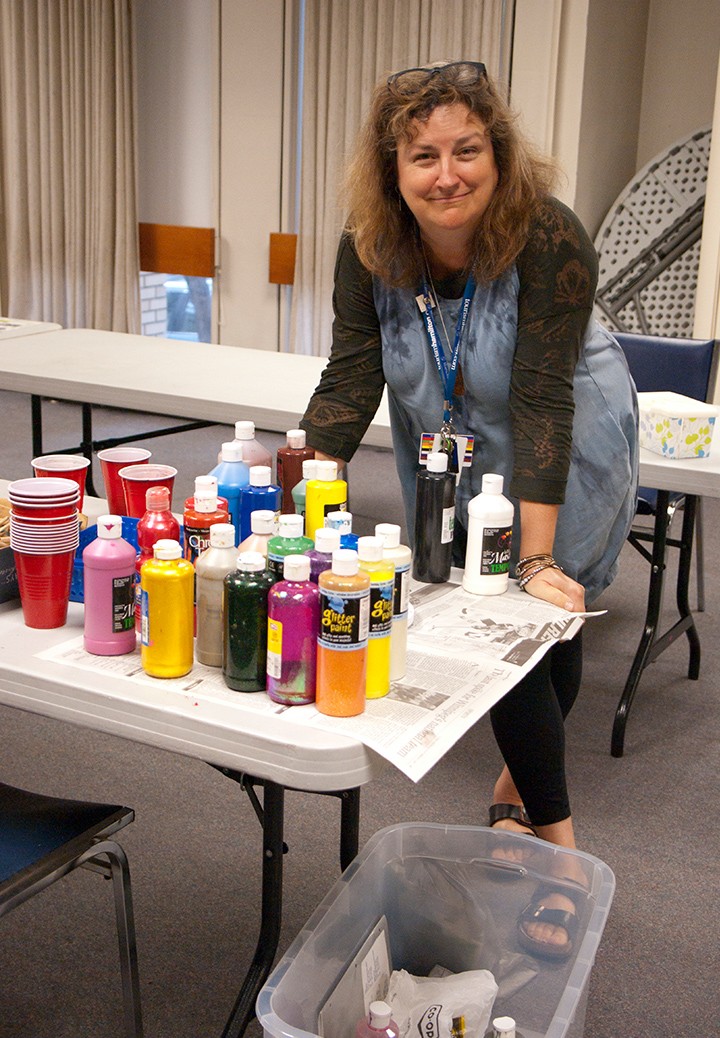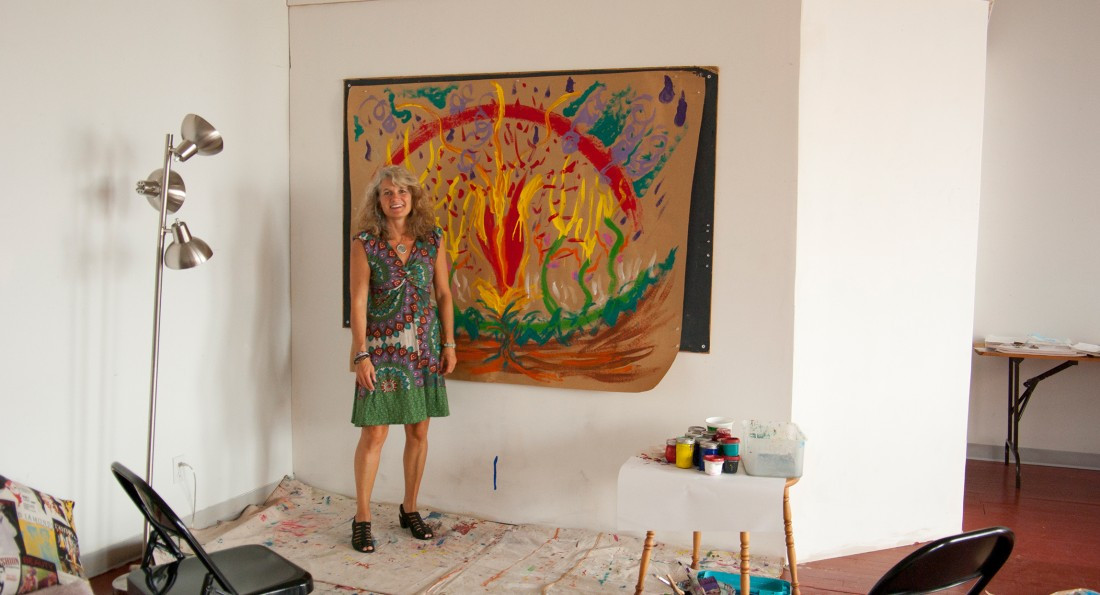The Art of Art Therapy
Manitoba’s first art therapy certification program opens

Miriam Duff sets up for class in Misericordia Education and Resource Centre at 691 Wolseley Ave.
Manitoba’s first art therapy certification program opened this summer.
Art therapist Darci Adam started the Winnipeg Holistic Expressive Arts Therapy (WHEAT) Institute because she thought it was about time classes were available in Manitoba.
“As an art therapist, you learn how to hold space for creative expression,” Adam says.
Students also learn how to guide people toward particular mediums so they can better express themselves. Adam suggests paint as a suitable medium for big emotions, while markers might be a better choice for someone who is reserved.
It’s not necessary to be a professional artist to be an art therapist, Adam says, but you do have to be creative and believe in the power of the arts.
It’s also important to have therapist traits, such as being caring, empathetic and having the capacity to listen to difficult stories.
“Though we do find that with art-making as a tool, it can transform things so quickly that we don’t always spend a long time in the difficult story,” Adam says.
Adam says art therapy has a wide range of benefits.
“For adults, it’s really an exploration of the unconscious,” she says. “You don’t have to be an artist in order to communicate very powerfully what’s going on on the inside.”
For children, art therapy is often used as a relaxation tool.
“It’s its own reward, because it’s fun to do,” Adam says. “You don’t have to twist anyone’s arm to make art.”
Miriam Duff leads an expressive arts counselling group at Cancer Care Manitoba. Expressive arts is is a powerful medium for everybody, she says.
Duff says she is amazed at its healing power.
“It’s such an incredible way for people to connect with their own wisdom,” she says.
Illness often challenges a person’s personal identity, she says, but expressive arts is a way to bring themselves back in touch with who they are.
She finds art therapy to be a great way for patients to learn about themselves and about their experiences.
Duff is training at the WHEAT Institute and is working toward registering as an expressive arts therapist.
“To do this kind of work, it’s important to have training,” Duff says.
The WHEAT Institute offers an art therapy diploma and, in the summer of 2017, will add diplomas for expressive arts and drama therapy.
Adam says it will be the second school in Canada to offer a drama therapy diploma.
And since the WHEAT Institute is affiliated with the Canadian Art Therapy Association, the International Expressive Arts Therapy Association and the North American Drama Therapy Association, people who take the programs will be able to register with each, Adam says.
Adam encourages anyone who is interested in learning more about art therapy to attend the International Expressive Arts Therapy Conference it is co-hosting from Sept. 27 to Oct. 1.
Published in Volume 71, Number 2 of The Uniter (September 15, 2016)









